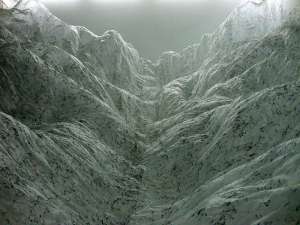During the avant-garde times of the nineteenth century the largest and most powerful countries in Western Civilization flourished in the sublime reign of a catholic monarchy; sublime in a sense that the pernicious snares of power coupled with the deleterious claws of terror directed a lugubrious people. “we are first terrified, before we are let even into the obscure cause of our emotion: but when this grand cause of terror makes its appearance, what is it? Is it not wrapt up in the shades of its own incomprehensible darkness, more awful, more striking, more terrible, than the liveliest description, than the clearest painting, could possibly represent it?” (Burke, Section II: Part) The recondite mien of terror is something that many believers shared in accordance with the Catholic Church, a temerarious condemnation of their sins pushing them to rid the world of all paganism and sorcery. Such a rapacious impetus is something that few would dare resist, and a force that many innocent, or unintentionally ignorant rebels suffered in the Victorian era. For many the soporific veil of eternal darkness and comatose sleep covered their eyes as a result of the vanquishing ceremonies of self-righteous European Christians.
The jagged valley and ominously grey sky invoke a haunting sublime feeling that penetrates the senses and causes one to ruminate over the veracity and ubiquity of death.
Sources: Burke, Edmund. “On The Sublime.” Www.gutenberg.org. N.p., n.d. Web. 5 Sept. 2012.
Boyd. “Snow Valley.” PhotoBucket. N.p., n.d. Web. 5 Sept. 2012.

